*N Willamette greenway route on the left, HOP greenway route on the right.
While the Portland Bureau of Transportation looks to continue the positive trends of 2018 with projects on high crash streets, they haven’t forgotten about neighborhood greenways.
This week City Council approved $1.2 million in funding for a low-stress route between NE 128th and the Gateway Transit Center in east Portland. And late last month PBOT visited the Arbor Lodge neighborhood to pitch their proposal for a new neighborhood greenway on North Willamette Blvd between Interstate and Rosa Parks Way.
The east Portland project is known as the HOP Neighborhood Greenway because it uses Holladay, Oregon, and Pacific streets to give bicycle riders a more pleasant option than the fast and stressful arterials of Glisan and Halsey. The project will include the usual trimmings of a street where cycling and walking are prioritized over driving: sharrow markings, special signage, a 20 mph speed limit, fewer stop signs, more street trees, speed bumps, and so on.
In addition, PBOT says they plan to improve the crossing at the intersections of NE Pacific and 102nd and at NE Holladay and 122nd. There are also two sections of the HOP route that are currently “unimproved” (gravel) roads where PBOT has significant upgrades planned.
Here’s what’s coming to NE Oregon between 110th and 111th…
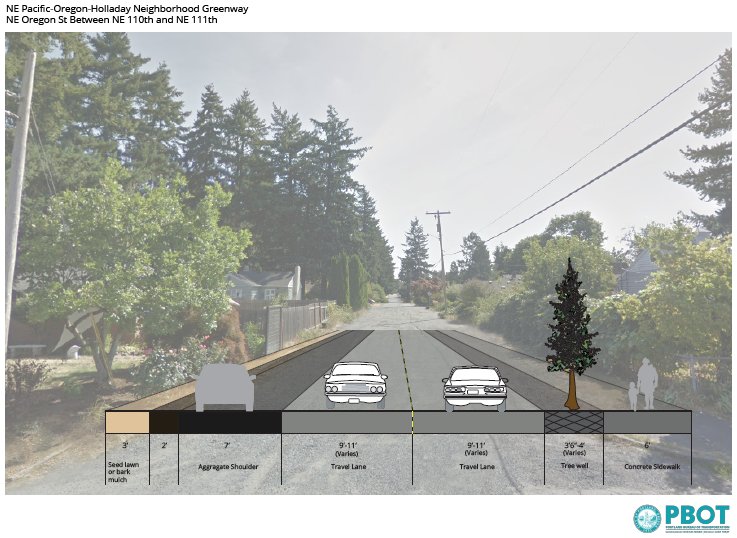
And on NE Holladay between 118th and 119th…
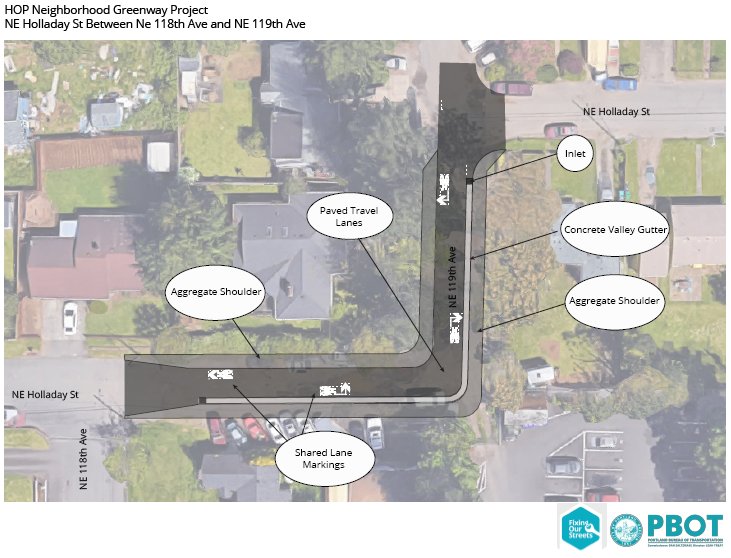
Construction on the HOP greenway is scheduled to start sometime this year.
Advertisement
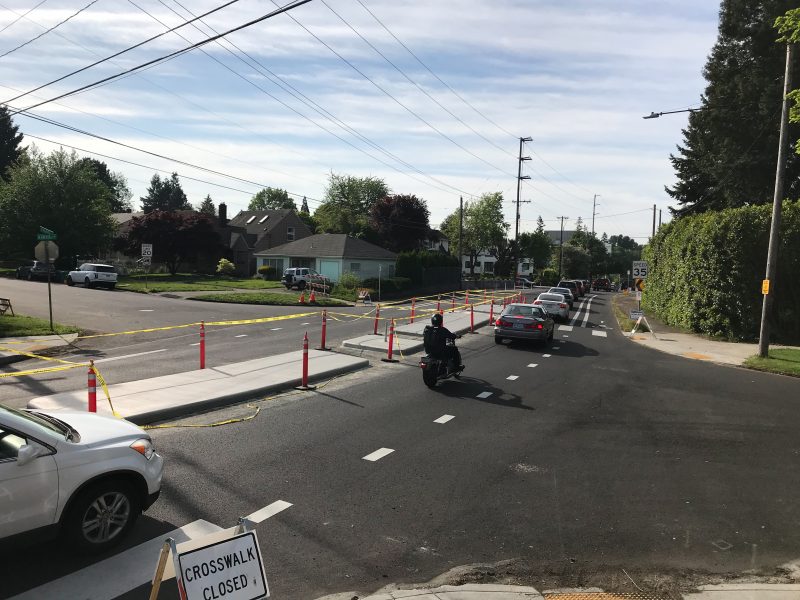
(Photo: Jonathan Maus/BikePortland)
Willamette Blvd in north Portland is already a de facto bikeway. Many people use it as an alternate to busy, stressful conditions on Interstate Ave and Rosa Parks. It’s also a nice shortcut if you’re riding between downtown and University Park/St. Johns. Unfortunately as the amount of drivers in this area has increased, many of them cut-through neighborhood streets in this area. You might recall this issue coming up in our stories about people who vandalized “20 is Plenty” signs on N Villard.
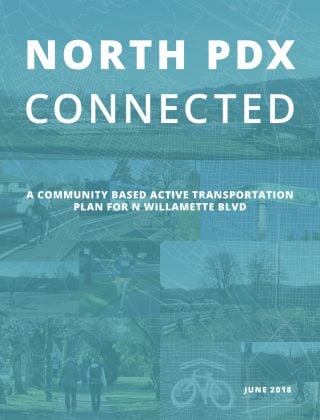
PBOT plans to thwart this disrespectful driving behavior through “traffic pattern changes that reduce the number of people cutting through.” Methods they plan to employ include speed bumps to slow drivers down and all the typical greenway features so people know to expect bicycle users on the route. Here’s more from PBOT:
“People using N Curtis, N Villard, N Atlantic, and N Willamette to avoid busier main streets has been increasing for several years. Community members have increasingly asked for solutions to the high volume of cars speeding down their typically quiet, calm streets. PBOT collected traffic data and found the speed and volume of people driving is impacting the local street network and creating unsafe conditions. The N Willamette Neighborhood Greenway project will create a new, low-stress bikeway on a key connection on the peninsula and improve residential streets by instituting traffic diversion and calming measures in key locations.”
The exact location and design of the diverters remains to be seen and is likely to be hotly debated. Given their past experiences with diverter proposals, PBOT felt the need to post a statement on the project website that might limit their options: “All changes will allow full access to homes for residents, visitors, and deliveries.”
The city can hit the ground running on this project in part because Willamette Blvd has already been the focus of plans by neighborhood advocates and a group of Portland State University urban planning students. North PDX Connected: A Community Based Active Transportation Plan for N Willamette Blvd (PDF) is the title of a project published in June 2018 that included many recommendations on how to improve the street.
Back in October we reported that the city has $68,000 already set-aside for this project.
PBOT plans to do outreach on this project in the coming weeks and months, then test potential changes in March. Final plans are due to be completed by this spring with construction in the summer of this year. See the official project page here.
— Jonathan Maus: (503) 706-8804, @jonathan_maus on Twitter and jonathan@bikeportland.org
Never miss a story. Sign-up for the daily BP Headlines email.
BikePortland needs your support.


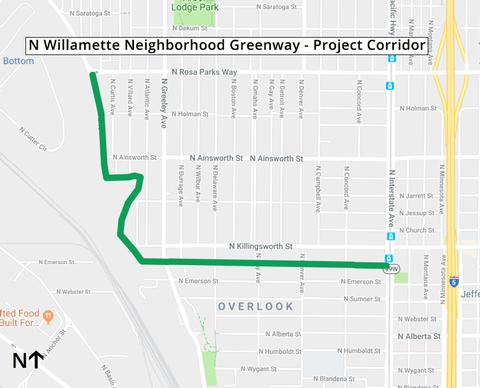
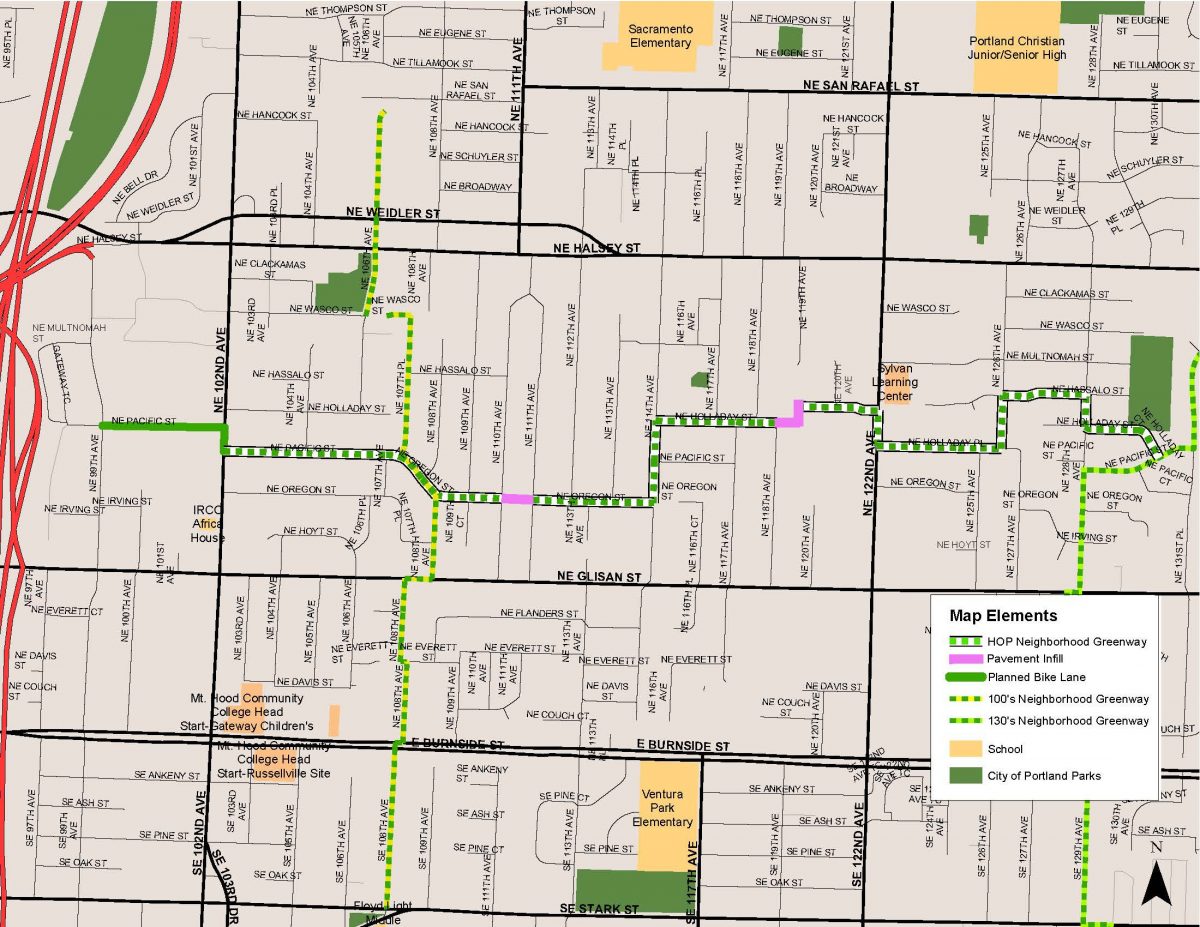
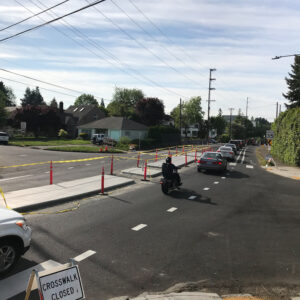
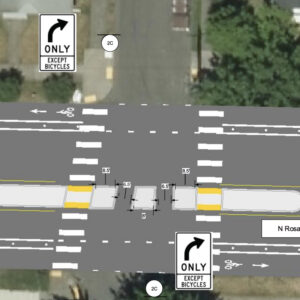
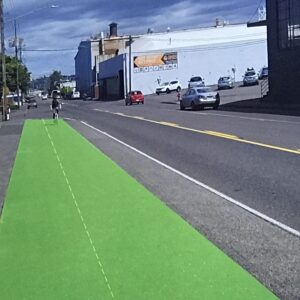
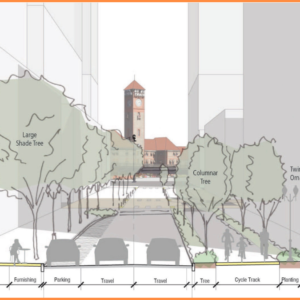
Thanks for reading.
BikePortland has served this community with independent community journalism since 2005. We rely on subscriptions from readers like you to survive. Your financial support is vital in keeping this valuable resource alive and well.
Please subscribe today to strengthen and expand our work.
Great updates! I’d really like to see the City complete the I-205 Underpass connecting the Tillamook Greenway to Gateway Green and the HOP Greenway in East Portland.
Absolutely! I live just north and west of gateway green now but am moving to Parkrose Heights, on the other side of 205 and south of Fremont. My commute will take me from around 117 and Halsey to NE 7th. It’s mostly great, since I can take Tillamook from 92nd to 7th, but crossing 205 is going to be a huge bummer every time.
Take it from me, it is a HUGE bummer. East of 205 is terrible riding, but we have no choice. : (
I ride east of 205 all the time. There are some great routes and some not-so-great routes. Mostly, I just wish there was a better way to get over 205. It’s a terrible bottleneck as it is, and while I understand there’s a project to route cyclists under (?) the freeway, it’s not slated to begin until 2021, which means at least 3 years of hopping on the Halsey sidewalk to commute.
Seriously. Particularly if you have a death wish and like to take your chances on Division east of 205 to get to the multi use path. Which, sadly, is my neighborhood and where my commute south to West Linn begins. That street is a meat grinder with a shamefully high bodycount in pedestrians and cyclists.
I know it’s not part of the plan but I wish Willamette in the St Johns area would get safety camera or real bollards. The bike lanes are wide enough for it. It would be transformational
PBOT needs to remove much of the on-street parking on neighborhood greenways beginning with daylighting intersections. Too many greenways are far too dangerous with excessive parking available all the way up to the intersection edges. Abysmal sightlines for motorists seems to be the status quo in too many spots.
Absolutely. And the Planning Commission and City Council should allow small scale, bike- and pedestrian- friendly commercial uses along greenways as a step toward car-free(er), 20-minute communities.
One issue I see in the HOP design are those aggregate shoulders. Depending on the depth of the loose aggregate they are both a hazard if a cyclist needs to swerve into them avoiding aggressive drivers, and also cars that park on them will surely move gravel pieces into the roadway which is concerning given the sharp corners in this design. S/W bound in the illustration shown there will 100% be a ton of gravel after the right from 119th to Halladay from cars cutting the apex of the turn and scattering gravel all over the road. It happens every single time they nicely repave a rural road here in WaCo, but also lay a fresh gravel shoulder. Enjoy the smooth ride, but watch out for the marbles!
I wish there was some other non-hardscape shoulder solution the city would use there instead, like maybe open cell paving that allows greenery/drainage but also provides a level hard surface for car and bike tires/wheels.
Not sure you are familiar with that bend but that area has very low levels of car traffic. It’s currently unpaved and has seasonal ponds so the paving is primarily intended to provide bike/ped access.
Not sure if you are familiar with the English language or not but starting a reply that way is snide and a passive aggressive way of trying to de-legitimize someones input. The ad hominem fallacy is just one step above name-calling as I’m sure you’re aware.
Sorry, didn’t realize this thread was “locals only” but I do ride through the Gateway area a few times a year and would potentially use this new greenway. I had input on how it could be better for all users and was only mildly critical of one aspect of the city’s plan. Any reason I shouldn’t be able to express my thoughts about it without the cutdown, or is that just your modus operandi?
i used that language because i did not want to assume that you had ridden that bend or that you did not live in that area. moreover, considering that i don’t live that area, i guess i was also delegitimizing myself.
the other reason that i offered the explanation of the previous context is that pbot was reluctant to spend the cash to repave this area so, in some respects, this represents a victory for local advocates.
Since tone is notoriously difficult to glean in online posts, I can understand that explanation and that I possibly took the tone incorrectly. I am glad that at long last E. Portland streets are starting to get the intention they deserve from PBOT and didn’t at all mean to insinuate doing nothing would be better. I’ll look forward to the new E/W greenway myself. After it’s completed just keep an eye out in that area for the potential of stray gravel everyone.
I thought it was called HOP because of those streets jump around. The route literally hops from one street to the next!
Maybe it’s an experiment to find out how much lateral deviation from the line of travel is needed to reduce cut-through traffic.
True story on the HOP name: Back in May 2009 the East Portland Action Plan formed a bicycle advocacy committee called EPAPbike. Soon afterward we started meeting with PBOT staff Greg Raisman, Timo Forsberg, and Roger Geller about various possible greenways for East Portland. By 2010 we had a rough map of our priorities. The most important was a central north-south route using parts of 129th, 130th, & 132nd and an east-west using an existing Multnomah County signed route along SE Market, Mill, Millmain, & Main. We early on realized that any advocacy we did was made much easier (with city staff and city council) if we had easy-to-remember bike route names, hence the 130s and 4M respectively. These two primary routes would be the skeleton that additional routes would be fleshed-out upon. The 2nd tier routes included the Bush Street route (which ironically was done before any of the others), Sacramento/San Rafael, and Prescott/Skidmore/Fairmont, plus the 80s, 100s and 150s. The HOP was a 3rd tier route that came about from a PSU study in 2011 or 12 that looked at connecting the I-205 path to 102nd Ave on Pacific (the bus route into the Gateway MAX station). We figured it could easily connect on some local neighborhood streets (including Oregon) to the new East Holladay park near 132nd. And of course it needed a cute name, hence the HOP.
I’m not really an expert on this sort of stuff, but I feel like that’ll be a persistent issue if PBOT tries to export what worked reasonably well in close-in NE Portland (neighborhood greenways) to East Portland. Close-in Portland is older and all the streets (both neighborhood and arterial) are on a grid. East Portland is much more similar to the suburban development style of the 1970s where neighborhood streets “dead-end” and arterials are extremely wide to support all the induced through traffic.
In my opinion, Complete streets programs in East Portland should focus on traffic calming arterials with separated bike, bus and pedestrian infrastructure.
Especially the N-S routes. There’s plenty of quite nice E-W routes (Lincoln, Clinton, Going, Tillamook, Ankeny, etc), but none of the N-S greenways take a direct route. 20s greenway is a total nightmare.
I agree with you now, in 2019, but when this project was first suggested in 2011, protected bike lanes on arterial streets was unknown even in inner Portland, let alone in East Portland. Bicycle boulevards (greenways) were still all the rage with BP and PBOT. Keep in mind that East Portland already had (and still has) more arterial bike lane mileage than any other part of Portland, but on major high-speed arterial roadways that we now regard as totally inappropriate for narrow unbuffered 4-foot bike lanes. How times change!
8 years is a long time in the bike world, between an idea and project implementation.
I saw the 70’s edition of a greenway and thought the same thing. I’ll stick with more direct routes as well.
As a nopo resident, I am happy to see the improvements to Willamette, and I expect to got for ok to better. However, I can’t help wonder why PBOT won’t focus on more meaningful projects like closing some of the dangerous gaps in the bike network like Willamette between Alma and Richmond and Skidmore between Michigan and 7th. There are very few safe E/W routes that cross Interstate, I-5, Mississippi/Abina, Williams, Vancouver, and MLK. Skidnore does this with EXISITING infrastructure, and the bikelanes already extend from Interstate to Michigan. Complete the lanes on Skidmare by removing some on-street parking and create a truly trans-formative connection that would safely connect so many isolated segemnts of bike infra and form a glorious network!
Yes, this please! Would looooove to see improvements to Skidmore.
The section of Willamette to be upgraded is already quite peaceful as it was removed as a through route for motor vehicles many years ago. Improvements are welcome, but given the excessive width of this stretch, it should include narrowing the pavement, creating a welcoming soft path for walkers/joggers that can one day go all the way to U of P. as well as a diverters to discourage cut through traffic. Maybe a light at Greeley?
Then the City can do something to upgrade the “Dog Bowl” to its full potential and connect it via a new ADA trail and rail crossing to the Willamette Greenway Trail at the Swan Island Lagoon! Note that both the Going Street sidewalk and Waud Bluff Trail are steeper than the ADA allowed 5% grade, so there is NO ADA access to Swan Island! (except the Ash Grove Cement Road!)
If PBOT really wants to make the Willamette greenway low stress, they’ll install signals at the intersections of Willamette and Greeley and at Willamette and Rosa Parks. The rest of it is already pretty low-stress, but getting across those two busy streets at rush hour is challenge, especially in the darkness of winter.
Stph
Pardon my disappointment. T
the ‘signature’ trail of the 2030 Bicycle Master Plan comprises of a large amount of putting a sign on existing roadway, calling it a trail. Well played, PBOT
Jonathan, damaging 20 is plenty signs is not actually damaging real speed limit signs. Your statement and link are misleading.
Yes. Good catch Doug. That was an innocent mistake on my part. I’ve fixed that sentence.
Thanks